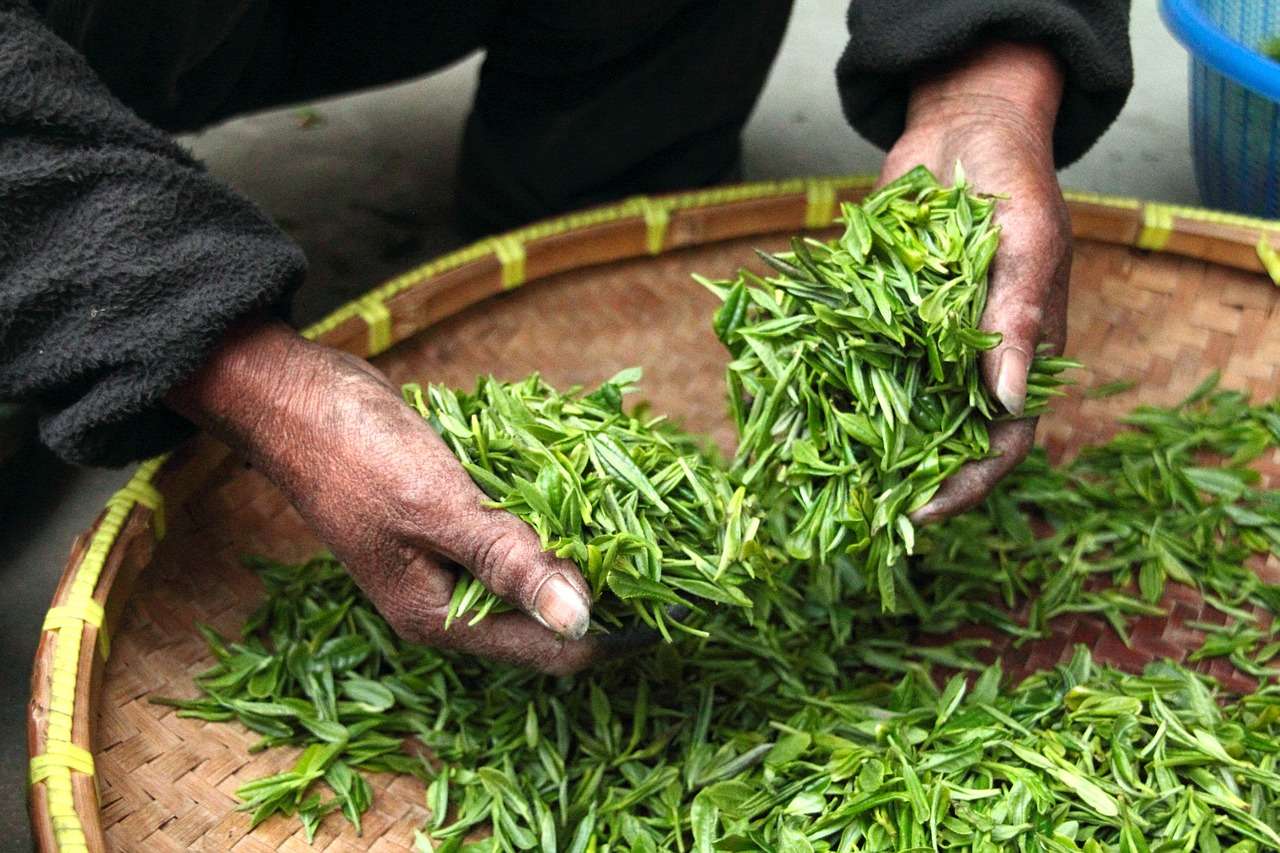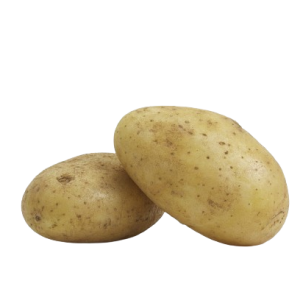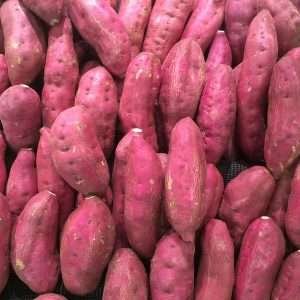【1】Promote sprouting and promote the growth of seedlings
Naphthalene acetic acid (sodium)
Soak the tea seeds with 10-20mg/L liquid medicine for 48h, then rinse them with water before sowing. It can be unearthed about 15d in advance, and the seedling stage is 19-25d earlier.
Gibberellic acid
The tea seeds were soaked with 100mg/L gibberellic acid solution for 24h. It can promote the germination of seeds, the root system of seedlings is developed, the growth is fast and strong, and the seedlings are released in advance.
【2】Promote rooting of tea tree cuttings
2,4-D
Tea tree cuttings or mother plants treated with 2,4-D can accelerate the division and elongation of cells and promote the production of adventitious roots. According to the research, 2,4-D has obvious effect on the growth of underground roots, mainly by strengthening the initial cell division, increasing the volume, and increasing the water absorption, so that the stimulated cells and tissues can speed up the absorption of nutrients, and promote the rooting of cuttings. and growth, improve the survival rate, and ensure strong seedlings. The cuttings developed roots 20 days earlier than the control, with an average of 34.2 roots per cutting, which was 4.8 times that of the control, and the survival rate was 96%, which was 14% higher than that of the control. Treatment by dipping or spraying: ①The base of cuttings is dipped, 1~2cm of the base of cuttings is immersed in 40~80mg/L2,4-D liquid medicine, and the cuttings can be taken out after 12 hours; ②The mother tree is sprayed, and the mother tree is left to grow When the new shoots are mature, spray 50mg/L 2,4-D liquid 7 to 9 days before cutting the ears, to fully moisten the branches and leaves of the new shoots, and spray 200 to 250kg of the water solution per acre of the crown. (Note: The dipping time of cuttings should be reduced with the increase of concentration; the concentration of the chemical should be strictly controlled during treatment, because growth can be promoted under suitable concentration conditions, and too high will inhibit growth or die.)
Naphthalene acetic acid (sodium)
Soak the base of the cuttings for 3-4 hours with 60-100 mg/L liquid medicine before cutting. In order to improve the effect, 50mg/L naphthalene acetic acid (sodium) + 50mg/L IBA mixture, or 100mg/L naphthalene acetic acid (sodium) + 5mg/L vitamin B1 mixture can also be used.
IBA
Before cutting, use 20-40 mg/L liquid medicine, and soak it in 3-4 cm long at the base of cuttings for 3 hours. IBA is easy to decompose when exposed to light. Medicines should be packed in black and stored in a cool and dry place.
50% naphthalene ethyl·indomethacin rooting powder
Use 500mg/L 50% naphthalene ethyl·indene rooting powder for tea tree varieties that are difficult to root, and use 300-400mg/L rooting powder for easy rooting for 15s, leave for 4-8h, and then cut. It can promote early root development, 14 days earlier than the control; increase the number of roots, 18 more than the control; improve the survival rate, 41.8% higher than the control; increase the dry weight of young roots, 62.5% higher than the control; increase the plant height, more than the control Height 15.3cm. After treatment, the survival rate was almost 100%, and the nursery rate was increased by 29.6%. Gross output value increased by 40%.
【3】Promote the germination and growth of tea buds
Gibberellic acid (GA3)
The effect of gibberellic acid in increasing production is mainly that it can promote the division and elongation of cells, thereby promoting the germination of shoots and leaves, stimulating and accelerating the growth of new shoots. After spraying in leaf-picking tea gardens, dormant buds are stimulated and quickly germinate and grow, the number of buds and leaves increases, and the number of leaf clips is reduced, and the tenderness is good. According to the test and measurement of the Tea Science Institute of the Chinese Academy of Agricultural Sciences, the density of shoots increased by 10% to 25% compared with the control, and the yield of spring tea was generally increased by about 15%, that of summer tea was increased by about 20%, and the yield of autumn tea was increased by about 30%.
The use concentration should be appropriate, generally 50 ~ 100mg/L is more suitable for spraying, and 50kg of liquid medicine is sprayed on the whole plant per mu. The temperature in spring is lower, and the concentration can be higher; in summer and autumn, the temperature is higher, and the concentration should be lower. According to the experience of various places, the initial spraying effect of 1 leaf and 1 heart is good. It can be sprayed all day in the low temperature season.
The petiole injection of 10-40mg/L gibberellic acid on unbranched young tea trees can break the dormancy, and the tea trees grow 2-4 leaves in mid-February, while the control tea trees don’t start to grow leaves until early March.
Attention should be paid to the use, it cannot be mixed with alkaline pesticides and fertilizers, and the effect of mixing 0.5% urea or 1% ammonium sulfate is better; the application concentration is strict, and it should only be sprayed once per tea season, and fertilizer and water management should be strengthened after spraying; The effect of gibberellin in the tea body is about 14d, so it is appropriate to pick one bud and three leaves; gibberellic acid should be used as needed.
Triacontanol
Triacontanol can accelerate the germination of tea trees, promote the growth of new shoots and shoots, increase the density of shoot heads and the density of 1 bud and 3 leaves, and the yield increase effect is obvious. Processing about 15d before Qingming can increase the yield of “Mingqian tea”. About 7d before each picking (1 bud and 1 leaf at the initial stage and 15d after), use 0.5-1mg/L triacontanol milk powder, about 50kg per mu of liquid, and spray the whole plant evenly. Pay attention to the strict drug concentration. If 3% urea is added during use, the effect will be better.
p-Chlorophenoxyacetic acid
In the spring, summer and autumn budding period of tea trees, use 60mg/L p-chlorophenoxyacetic acid to spray the whole plant, and spray 50kg of liquid medicine per mu, which can promote the early emergence of tea buds and increase the yield. Generally, the yield is increased by 26% to 35%.
Sodium Nitrophenolate
In the early stage of spring tea, the whole plant was sprayed with 3-4.5mg/L sodium nitrophenolate solution at the initial stage of 1 bud and 1 leaf to promote the early emergence of axillary buds, and the effect of increasing yield was obvious. Spring tea is generally sprayed about 2 times, summer and autumn tea can be combined with pest control and pesticides, evenly sprayed on the front and back of the leaves, and it is moderately wet and unclear to achieve two effects of pest control and growth promotion. According to the test, after spraying sodium nitrophenolate on tea trees, it showed a variety of physiological effects. First, the spacing between buds and leaves was elongated, and the bud weight increased. According to the measurement, the bud weight increased by 9.4% compared with the control. Germination, the germination density increased by 13.7%; the third is to increase the chlorophyll content, improve the photosynthesis ability, and the leaf color becomes greener.
Brassinolide
Spraying 0.02-0.1mg/L Brassinolide solution in the budding stage of tea tree can promote the growth of tea tree buds, increase the germination density, increase the yield of buds and leaves, and also increase the yield of fresh leaves by 17.8%. Tea production increased by 15%, and the effect of increasing production was obvious.
Gibberellic acid (GA3) and kinetin
Spraying on the leaves with 75mg/L furfuraminopurine (kinetin) at the beginning of the expansion period of tea buds, and sprayed once every 7 days. At the end of the tea season, it can promote the length of new shoots and increase the number of tea leaves. The length and number of lateral branches of seedlings. Spraying with 5-50mg/LGA3 liquid in early spring can increase the internode length, plant height and leaf area per plant of tea seedlings. The use of the two alone or in combination can promote the growth of twigs and leaves, increase the number of tea pickings, and increase the yield of tea, with no significant impact on the quality.
Gibberellic acid and 6-BA
Generally, 50-100mg/L gibberellic acid combined with 50-100mg/L6-BA is sprayed on the leaves at the initial stage of 1 bud and 1 leaf, which can increase the yield of tea, and the total nitrogen caffeine and protein content in the tea after treatment are relatively high. Great improvement.
【4】Inhibit the formation of tea seeds
Ethephon
The purpose of cultivating tea trees is to harvest more of its young shoots. Therefore, for leaf-picking tea gardens, the application of growth regulators to control the growth of flowers and fruits and promote the growth of buds and leaves is an effective way to increase the yield of tea. The mechanism of action of ethephon on tea trees is to promote the activity of abscission cells in the flower stalk and fruit stalk to achieve the purpose of shedding. According to the experiment of the former Department of Tea Science of Zhejiang Agricultural University, about 15 days after spraying, the flower drop rate is about 80%. Due to the reduction of the consumption of nutrients by flowers and fruits, the output of tea in the following year can be increased by 16.15%. The spray concentration should be 500~1000mg/L. Since the release of ethylene molecules is accelerated with the increase of temperature, the concentration should be appropriately reduced when the flower buds are small, the tissue is growing vigorously or the temperature is high; the concentration should be appropriately high when most of the flowers have opened and the growth is slow or the temperature is low. some. Spraying from October to November has the best effect of increasing the yield of flowers and fruits.
The spraying concentration of ethephon should not be excessive, otherwise it will cause abnormal defoliation, and the amount of defoliation will increase with the increase of the concentration; in order to reduce the defoliation, ethephon 1000mg/L plus 30mg/L gibberellic acid mixed spraying has a significant effect of protecting leaves, while It does not affect the effect of thinning flower buds; it is appropriate to choose cloudy days or evening when spraying, and it is required that there is no rain within 12 hours of spraying.
【5】Enhancing the stress resistance of tea tree
2,4-D
Spraying 200mg/L 2,4-D liquid before the overwintering of tea trees can improve the cold resistance of tea trees and have a significant stimulating effect on the spring shoots of the following year.
6-BA 50mg/L6-BA
treatment of “Fuding Dabaicha” tea seedlings, the contents of chlorophyll, soluble sugar and soluble protein, the enzyme activities of SOD, POD and CAT, and the contents of malondialdehyde and proline were all affected to different degrees. Significantly improve the cold resistance of tea trees.
Ethephon
Spraying with 800mg/L liquid in late October can inhibit the re-growth of tea trees in late autumn and enhance the cold resistance.
Butyric hydrazide
Spraying 1000-3000mg/L butyrate hydrazide solution in late September can promote the stagnant growth of tea trees in advance, which is favorable for overwintering, and the spring shoots grow well in the second year.
Chlorhexidine
Spraying 250mg/L chameleon solution in late September can promote the stagnant growth of tea trees in advance, which is conducive to overwintering, and the spring shoots grow well in the second year.
Abscisic acid
Spraying 25mg/L abscisic acid can increase the stomatal diffusion resistance of tea trees and reduce water potential, thereby reducing transpiration water loss and improving drought resistance.
Related products
FAQ
We are based in Henan, China, start from 2021,sell to South America(31.00%),North America(25.00%),Western Europe(15.00%),Central America(8.00%),Oceania(5.00%),Eastern Asia(5.00%),Eastern Europe(4.00%),Southeast Asia(3.00%),South Asia(2.00%),Africa(00.00%),Mid East(00.00%). There are total about 5-10 people in our office.
Always a pre-production sample before mass production;
Always final Inspection before shipment;
Gibberellin GA3,Cytokinin,Rooting Hormone,Fruit Coloring,Plant Growth Inhibitor
1. Professional supplier of Gibberellic acid,IBA, 6-Benzylaminopurine, CPPU,abscisic acid and other plant growth regulators 2. 12 years exporting experience with customers all over the world 3. Product has been approved by SGS
Accepted Delivery Terms: FOB,CFR,CIF,EXW,FAS,CIP,FCA,CPT,DEQ,DDP,DDU,Express Delivery,DAF,DES;
Accepted Payment Currency:USD,EUR,JPY,CAD,AUD,HKD,GBP,CNY,CHF;
Accepted Payment Type: L/C,D/P D/A,MoneyGram,Credit Card,PayPal,Western Union,Cash,Escrow;
Language Spoken:English,Chinese,Spanish






